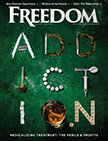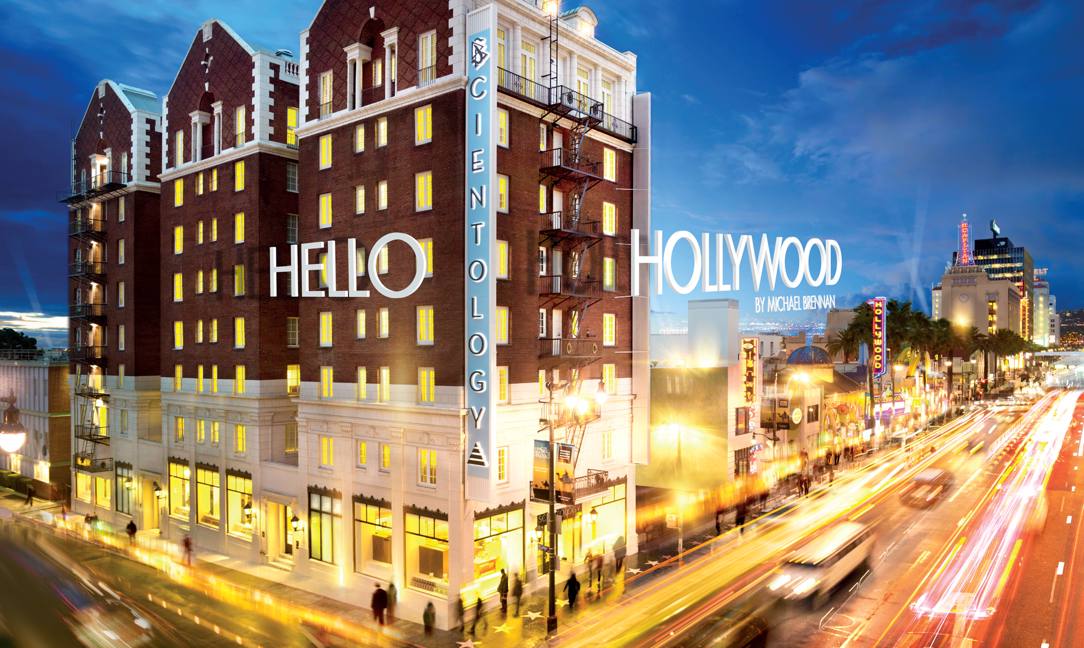Hello Hollywood

Walking to my destination on a typically gorgeous, Los Angeles winter day, I pass boutiques and bars, restaurants and stars (on the sidewalk, along the celebrated Walk of Fame).
There are distractions aimed at every sensibility along the way. Whether your appetite is for fashion or fortunetellers, shopping or sex, tacos or tarot cards, it can be fed on Hollywood Boulevard.
The mix of stores, offices and restaurants is as eclectic as the blend of people on the street. An African souvenir shop is two doors from “The Oldest Pizzeria in Hollywood” and up the road from Musso and Frank, the 95-year-old red-boothed steakhouse, sometimes called the genesis of Hollywood.
A hundred yards from my target is a Tattoo and Smoke Shop. Three doors down is Grauman’s Egyptian Theatre, celebrating its 93rd anniversary.
And then I see it.
Across the street from where the sidewalk holds the stars of Walt Disney, Betty White, Liberace and Doris Day, and catty-corner from Frederick’s of Hollywood (Store Closing Soon!), at the intersection of North McCadden, I see the 40-foot-tall SCIENTOLOGY marquee—silver with letters on a background of bright baby blue.
The sign, and the uniformed staff member on the sidewalk outside the new Church of Scientology Los Angeles information center, invite me to step inside.
There is a constant stream of foot traffic outside the building and a consistent flow in. Some enter having a familiarity with the religion, and a specific intent: to buy a book, take a class or get counseling.
Others, like me, enter with nothing but curiosity. As a new reporter for Freedom, and a non-Scientologist, I am set to write a story about the new information center, which opened in January 2015.
It’s located in the former Christie Hotel, commissioned in 1920 as the first “modern” luxury hotel in Hollywood. At eight stories, with arched peaks and top-floor balconies, it was one of the city’s first “skyscrapers,” featuring 100 guest rooms, each with its own bathroom—a rarity back then.
Since then, the hotel has been bought and sold a few times, and operated under different names, including The Drake and The Hollywood Inn. In 1974, the Church of Scientology bought the white stone and red brick building.
Today, and after extensive remodeling, the first floor and basement house the new Scientology information center. The former guest rooms upstairs are now apartments for Church staff members.
The lobby is bright and open, with high ceilings, large windows, and stylized decorative lighting. Numerous shelves and kiosks are neatly stacked with hardcover books, audiobooks and books on film—all in multiple languages, and all the work of Scientology Founder L. Ron Hubbard, certified by Guinness World Records as the most translated author. (Today his work is available in more than 100 languages.) There are also several of his inspirational quotes artistically displayed on the walls.
The lobby has several state-of-the-art video displays, and benches in front of each, allowing visitors to sit and watch an assortment of short films introducing Scientology concepts and programs.

In the center of the room, toward the front, is a welcome desk, with two or three staff members in smart blue and white uniforms.
They say “Hello” and “Welcome” as I enter, but don’t rush to meet me until I’ve walked around on my own a little. A pretty mid-20s blond with long curly hair greets me as I approach the desk. “Hi, I’m Denise. Welcome. What brings you here?”
I tell her that I’m doing a story for Freedom, and that I’d like to learn a little about what people experience when they first make contact with Scientology.
Denise tells me that a couple hundred people come in every week—and that 80 percent of them just want to look around. Others come in with questions. “They usually have heard about Scientology, but want to know what it’s all about,” she says.
Denise explains that Scientology offers tools that can help people “confront their own problems.”
Denise’s parents are Scientologists, so she grew up in the religion, but the path she’s followed in it is her own.
I asked her what would be the first step for someone who walks in wanting to know more about Scientology. She suggested I watch a short film about L. Ron Hubbard.
He was born 104 years ago this month in Nebraska and raised primarily in Montana. I learned of his adventures as the youngest Eagle Scout in American history, his world travels before the age of 16 (his father was a U.S. Navy officer), and his days as an engineering student at George Washington University.
Mr. Hubbard went on to become a prolific writer, penning intrigue, sci-fi, fantasy and even romance stories for books and magazines. After discovering mental blocks that inhibited servicemen from recovering from injuries, the film said, he penned Dianetics. Published in 1950, it became the biggest-selling book ever on the mind. Two years later, he used his doctrines of self-awareness as the foundation for the Scientology religion, which is meant to be studied and applied to daily life, relationships, and personal spiritual development.

The short film was impressive. And it left me with questions.
As the next step, Denise suggested I take a personality test. As we proceeded to the testing room, she told me another story.
A small group of Christian men from the South—Mississippi and Alabama—came into the center the previous week. Their goal was not to learn about Scientology, but to convert Denise to their beliefs. “I wasn’t trying to convert them, but they spent hours trying to convert me,” she says, indicating they got a little resentful when she wouldn’t be swayed.
“They came back later that night and apologized,” she adds. “We agreed to disagree. I promised I would read the Bible, and they said they would read Dianetics.”
The 150-question test—which took roughly 30 minutes to complete—is called the Oxford Capacity Analysis. It’s designed to identify areas of one’s life that are less than satisfactory.
After I took it, Jenny, the staff member who reviewed my test, spoke as if she knew me well. I’ll admit to a struggle in a few of the areas where she suggested my scores were lagging, but she was off on one or two others. Still, I felt like the test confirmed a few things I could personally work on.
“We can help with those,” said Jenny.
She led me to a senior consultant named David, a handsome, intelligent and personable young man. Based on what Jenny said, he suggested I take the Personal Efficiency Course.
The class was three hours long and convenient to schedule, available twice a day during the week, more frequently on weekends. It only cost $50.

Two days later, I went back to take the class. I was greeted again by Denise and by David, who escorted me downstairs to a seminar room outfitted with a video screen and comfortable chairs. The instructor was Victoria, a striking brunette who a year ago worked in a law office in Washington, D.C. Victoria, who is half French and half Danish, was born in Spain, but schooled mostly in the United States.
She told me I would be seeing a film version of one of Mr. Hubbard’s most popular books, The Problems of Work. As seminar manager, she would give a quick introduction to each of the film’s eight chapters, lead a brief discussion after each, clarify definitions and collect assignments after some of the chapters. The whole thing would take about two and a half hours, including a 15-minute break.
Chapter 1 was all about setting goals to succeed at work, and not relying on luck, family connections or other indirect means of advancement. Other chapters discussed efficiency and coping with being overextended.
I learned some key fundamentals of Scientology, such as the A-R-C Triangle (Affinity, Reality and Communication). I also learned the Eight Dynamics, which offer insight on how to handle your own personal goals, the desire for sex and family, succeeding in a group, helping the environment and all creatures of the universe, and enhancing spirituality.
The film was well-produced, informative and filled with some great suggestions. Life changing? Perhaps.
The course highlights problems many people face every day, and offers intelligent and plausible suggestions for improving yourself and your life.
L. Ron Hubbard’s approach is universally focused, aware of the impact each of us has on the world around us—and how we can improve it—and ourselves. It seems complete. And possible.
Some of his methods require contemplation and a determination to change your life for the better. Others are so simplistically perfect I felt like a fool for not having considered them myself.
For example: Do you spend all day in front of a computer, then go home and have trouble concentrating? His suggestion? Take a Walk.
That’s not Scientology “code” for anything. It means you should put on some sneakers, get up, and Take a Walk.
Are you arguing with your partner? The film I saw, and the book on which it’s based, suggest that both of you should take a walk—in opposite directions.
Breathe. Relax. At some point, the two of you will cross paths … and then continue walking, until you meet back up again, with a fresh outlook.
Simple. Possible.
At the end of the course, I met again with David. He told me the next logical step for someone wanting to learn more would be to take a Life Improvement Course addressing whatever areas the person wanted to work on. Topics include relationships, establishing trust, improving self-confidence, effective time management, marriage, parenting and handling financial stress.
All are 15 to 20-hour courses, which you complete at your own pace, with a supervisor to clarify and track your progress. These longer courses, with individual supervision, cost … are you ready? Fifty bucks. Total.
The Scientology information center in Hollywood is open from 9 a.m. to 10 p.m. seven days a week, and everyone is welcome. So if you find yourself on Hollywood Boulevard, why not … Take a Walk?




































